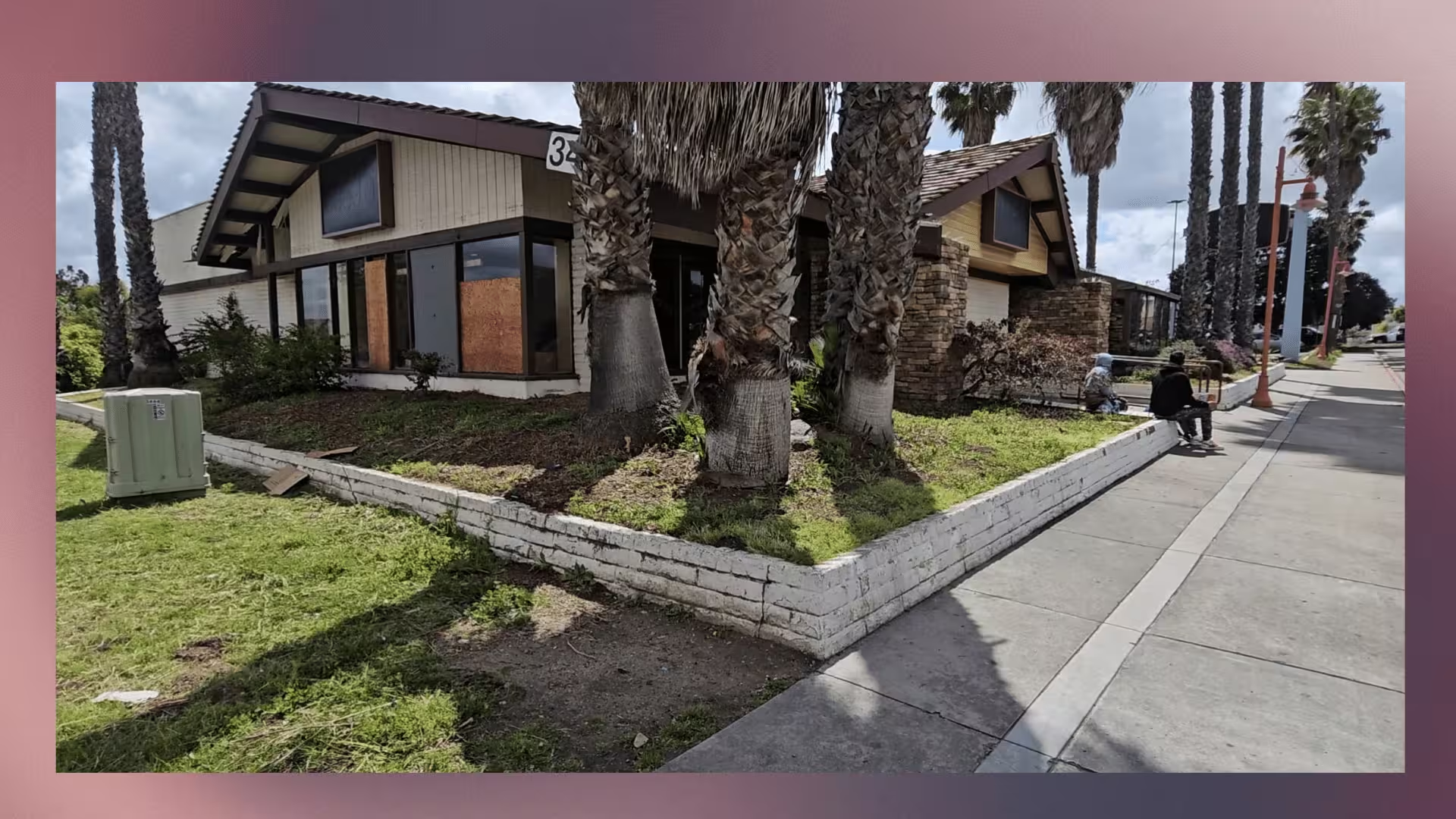Unveiling the Forgotten: The Dilapidated Property at College Grove Shopping Center
Hidden amidst the bustling aisles of Walmart, the hustle of Target, and the convenience of Kohl’s, lies a forgotten relic at the College Grove Shopping Center in San Diego. Once a thriving restaurant on the east entrance off College Blvd, this now vacant property stands as a stark reminder of neglect. But what truly paints a poignant picture is how this desolate space has become a hub for migrants and their families, seeking shelter and solace in its forsaken corners.
The Tale of Neglect: The dilapidated property at the College Grove Shopping Center tells a tale of neglect and abandonment. What was once a vibrant eatery now stands as a mere shell, with boarded-up windows and faded signage. As shoppers bustle past, focused on their errands, few spare a glance towards this forgotten establishment.
A Haven for the Displaced: Despite its derelict state, the vacant property has found a new purpose – a haven for migrants and their families. At certain times of the day, individuals can be seen entering and exiting the premises, seeking respite from the elements or a moment of reprieve from the challenges they face. Families, with tired eyes and hopeful hearts, gather outside, their presence a stark contrast to the consumerist frenzy just a few steps away.
Questions Unanswered: Amidst the vibrant backdrop of the shopping center, the presence of the dilapidated property raises questions that demand answers. How is it that such a thriving hub of commerce can overlook the plight of those seeking refuge within its shadows? What measures can be taken to address the needs of the displaced while revitalizing neglected spaces?
Investor Apathy: One possible explanation for the property’s neglect is investor apathy. Despite its strategic location within a thriving shopping center, investors may have chosen to overlook it due to perceived risks or complexities associated with revitalizing a deteriorating property. Perhaps the potential returns were deemed insufficient to justify the investment required for its restoration.
Financial Hurdles: Another aspect worth exploring is whether the asking price for the property is simply too steep. While the location holds promise, the cost of acquiring and renovating the neglected building may far exceed what investors are willing to pay. Additionally, uncertainties surrounding zoning regulations, renovation costs, and potential liabilities may further deter potential buyers from taking the plunge.
Market Dynamics: Furthermore, the broader market dynamics may also play a role in the property’s neglect. Economic downturns, shifting consumer preferences, or uncertainties in the commercial real estate market could dissuade investors from committing resources to redevelopment projects, especially ones with significant renovation needs like the dilapidated property at College Grove.
Community Impact: Beyond the financial considerations, there’s also a human element to consider. The presence of migrants and their families seeking shelter within the abandoned property underscores the pressing need for affordable housing and support services in the community. The neglect of such spaces not only perpetuates urban blight but also highlights systemic failures in addressing the needs of marginalized populations.
As we ponder the mystery behind the neglected property at College Grove Shopping Center, it becomes clear that addressing its revival requires a multifaceted approach. Investors must be incentivized to invest in revitalization efforts, whether through financial incentives, regulatory reforms, or community partnerships. Additionally, stakeholders must work together to explore creative solutions for repurposing neglected spaces to meet the diverse needs of the community.

